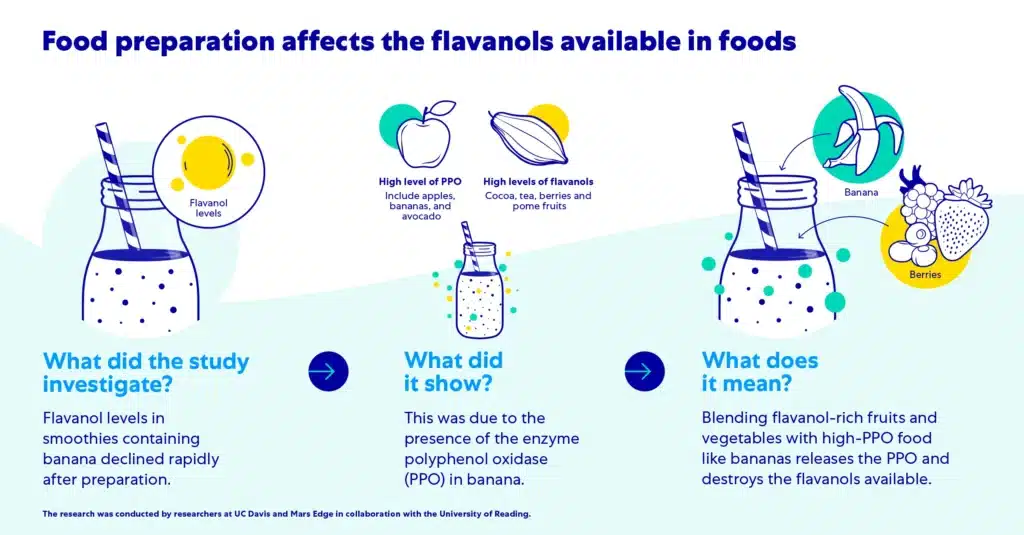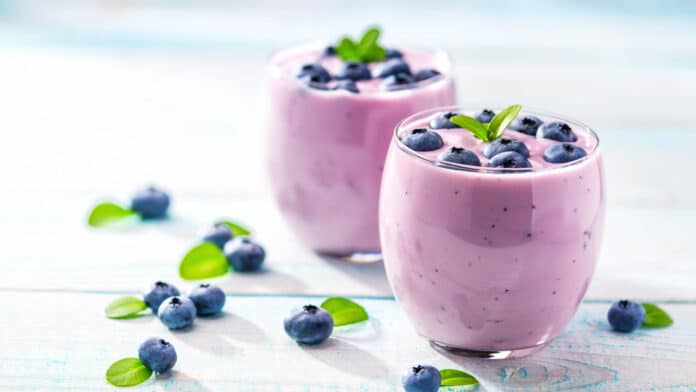Smoothies are a commonly endorsed, consumer-accepted means to increase the daily intake of essential foods and fruits. Foods and fruits used for smoothie preparation can have a high polyphenol oxidase (PPO) activity and thus potentially affect the content and bioavailability of flavan-3-ols. Flavan-3-ols are bioactive compounds found in a variety of fruits and vegetables (F&V) that have been linked to positive health benefits.
Researchers at the University of California, Davis, suggest that blending certain ingredients in smoothies can influence whether your body is getting a nutritional boost.
The levels of polyphenol oxidase were tested in the study using smoothies to see how they affected the amount of flavanols in meals absorbed by the body. A class of bioactive substances called flavanols, naturally present in fruits and vegetables like apples, pears, blueberries, blackberries, grapes, and cocoa, benefit your heart and cognitive health.
Scientists wanted to understand how a common food and food preparation like a banana-based smoothie could affect the availability of flavanols to be absorbed after intake.
A banana or an apple peeled or cut will immediately turn brown. Polyphenol oxidase, or PPO, is the cause of it. When the food containing PPO is chopped, bruised, or exposed to air, browning takes place. Scientists sought to answer whether ingesting freshly made smoothies made from various fruits high in PPO affected the quantity of flavanols the body could absorb.

Participants were given smoothies made with mixed berries, which naturally have low PPO activity, and smoothies made with bananas, which naturally have high PPO activity. As a control, participants also took a flavanol pill. Blood and urine samples were examined to determine how much flavanol was present in the body following consumption of the smoothie samples and capsule. Compared to the control group, those who consumed the banana smoothie had 84% lower levels of flavanols in their bodies.
Lead author Javier Ottaviani, director of the Core Laboratory of Mars Edge, said, “We were surprised to see how quickly adding a single banana decreased the level of flavanols in the smoothie and the levels of flavanol absorbed in the body. This highlights how food preparation and combinations can affect the absorption of dietary compounds in foods.”
“People who are trying to consume those flavanols should consider preparing smoothies by combining flavanol-rich fruits like berries with other ingredients that also have a low PPO activity like pineapple, oranges, mango or yogurt.”
“Bananas remain a great fruit to be eaten or consumed in smoothies. For those who want to consume smoothies with bananas or other high PPO activity fruits and vegetables such as beet greens, the suggestion is to not combine them with flavanol-rich fruits such as berries, grapes, and cocoa.”
“The findings of this study could spur future research into how other foods are prepared and the effects on flavanols. For example, tea is a major dietary source of flavanols, and depending on how it is prepared, a different amount of flavanols would be available for absorption.”
Journal Reference:
- Javier I. Ottaviani, Jodi L. Ensunsa et al. Impact of polyphenol oxidase on the bioavailability of flavan-3-ols in fruit smoothies: a controlled, single-blinded, cross-over study. Food and Function. DOI: 10.1039/D3FO01599H
